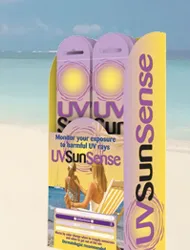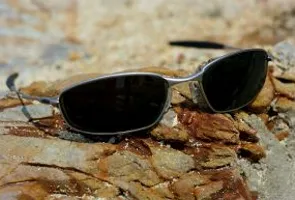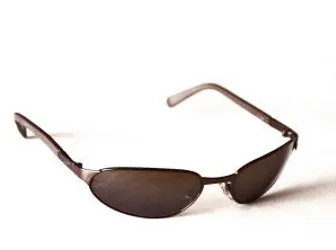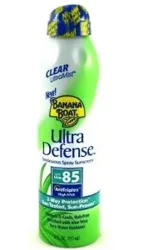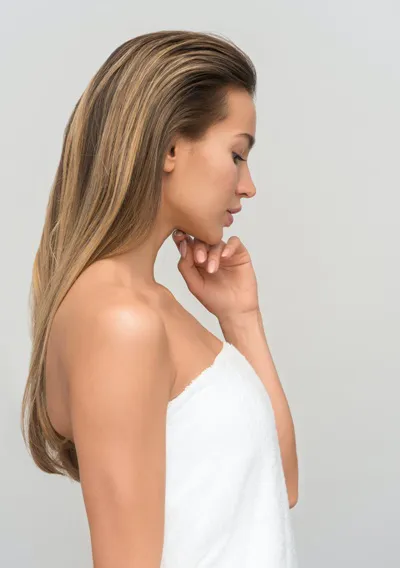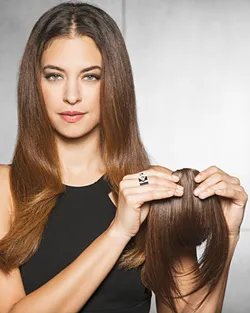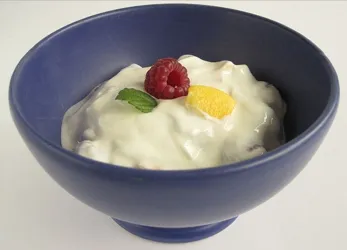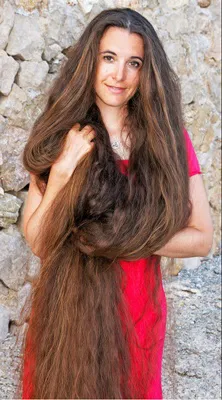
Sunscreen For Your Hair
Introduction
When summertime rolls around it is easy to get caught up in the toasty warmth of the sun and forget to adequately protect your hair. There's been lots of publicity lately about the damage that the sun can do to skin. Everyone knows that the sun can potentially cause cellular damage that can speed up aging and possibly trigger cancer. When you are thinking about protecting yourself from the sun, it is essential that you protect your hair as well. Sun damage to the hair can manifest as faded hair color, brittle and dry hair shafts and split ends. The sun's light waves are categorized by their intensity. There are three categories of light waves. These are UVA, UVB and UVC. The UVA and UVB can both damage the hair in a variety of ways. It can cause permanent damage to the outside covering of the hair known as the cuticle and it can penetrate into the center of the hair, which is the cortex and do all sorts of damage. UVA RaysUVA - Ultraviolet A - This is the sun's strong radiation-filled light rays. Ultraviolet A rays have the longest wavelength and they can penetrate into the hair's deepest inner layer, which is the cortex. The UVA rays disturb the hair cortex's fiber-like cells that gives the hair its strength and elasticity. It can also damage the color pigments that create natural hair color. The UVA rays can also burn the hair cuticle which is the outer hair layer. The cuticle contains a web of tiny overlapping scales. Then the scales are damaged they can not lay flat, like they are supposed to, and will look lifeless, brittle and dry. UVA rays can also burn and damage unprotected scalp. It is even possible to burn the part of your hair where scalp is unprotected. UVA rays can damage the skin on the scalp in many ways and activate free radicals which accelerates aging. A several sunburn on the scalp has even been known to cause some cases of hair loss. UVB RaysUVB - Ultraviolet B - These are invisible rays that also can penetrate deep into the hair's cortex or center damaging the hair fibers. It can also damage the hair cuticle. UVB rays can easily dry out the hair and cause natural and chemical colors to fade. UVC RaysUVC - Ultraviolet C - These rays are the most damaging but do not reach us because of the ozone layer which currently protects us. Types of Hair Protection FiltersThere are two type of sun protection filters that will protect the hair from UVA and UVB damage. Products will contain either physical or chemical filters. The Sun-Protection Factor (SPF) of a product refers to the length of time you can remain in the sun safely. To calculate this protection time, multiple the SPF by the number of minutes you can stay in the sun unprotected without burning. For example, if you normally takes 10 minutes of sun exposure before starting to burn, using a sunscreen with SPF 8 will theoretically extend this to 80 minutes. Physical FiltersPhysical filters sit on the hair's surface and reflect, rather than absorb, ultraviolet rays. Titanium dioxide and zinc oxide are some examples of physical filters used in most sunscreens. They repel radiation at all wavelengths (including infra-red waves), which is essential as burning and damage involves the interaction of all wavelengths at varying degrees. Chemical FiltersChemical Filters absorb ultraviolet light like a sponge and prevents the sun's rays from penetrating and attacking the hair. The fact that they can be mixed into any base, dissolved into gels, lotions, moisturizing cream bases and waterproof formulations making them cosmetically acceptable for use on the hair. Hair care products designed to filter the UVA and UVB can contain either a physical or chemical filter. Hair Care Products With Sun FiltersWhether a hair care product will actually protect your hair from UVA or UVB rays depends on the following factors:
Type of Hair Care Products You UseHair care products are designed in different ways to interact with the cuticle of the hair, which is the outer layer. Some of the hair care products that contain sun filters will work better than other hair care products because of the design of the products. Leave in hair conditioners are designed to penetrate or settle down into the layer of the cuticle. In other words, hair conditioners soak into the tiny little overlapping scales. Other hair care products like hair sprays and other types of hairsetting sprays may not be designed to soak into the shaft, but to float over it. This makes them less durable for any extended period of time. That is why some hairspray require touchups during the day. Hair care products that float on top of the cuticle and not down into it will over less protection. Strength of The Hair Care ProductSome hair care products actually have SPF agents that are listed on the bottle. Other products list a specific chemical component that is known to be a sunscreen agent. Some products offer leave-in heat protection spray and conditioner with ingredients such as Octyl Methyoxycinnamate which are listed in the contents. This is a known sunscreen ingredient. Most of the hair color manufacturers like Matrix and Framesi will have special SPF formulas added to their products. Some manufacturers will add the specific ingredients. If you are serious about sun protection for your hair, make sure the products you use list an actual SPF. Most hair care products will not use more than 10 SPF or the formula will be too heavy for the hair. Do hair care products with actual SPF formulas work to protect the hair?Yes, they have been proven to protect the hair from UVA and UVB damage. It is important to keep in mind that all hair care products with sunscreens are not the same. You may find that you have to pay more for a product with a strong SPF or 8-10. Warning: If a hair care product says that is has sun protection but does not list an actual SPF or does not list a specific known sunscreen like Octyl Methyosycinnamate, there is a possibility that the product does not really have sun screen protection and it could be a marketing ploy. Unfortunately, some hair care companies will advertise that their product will protect against UVA or UVB rays and they don't. It is very important to read the labels and to understand what you are buying. Amount of sun exposure your hair will haveHair products with listed SPF factors that are designed to penetrate the hair cuticle (like leave in conditioners)nwill serve you well is daily short periods of sun exposure. If you are going to the beach or will be out in the sun for an extended period of time it is best to supplement your sun protection product with a full blown SPF type of product or a product designed specifically for heavy or prolonged sun exposure. The surface of the hair can grab a leave in conditioning product for an extended period, but it may be best to supplement for added protection. An example of a supplemental product would be the Phytoplage Sun protection oil. Hair Care Products Designed For Summer SunPhytologie's Summer Hair Products were specifically designed to protect against sun, salt and chlorine. They offer several that work in conjunction with each other to give complete sun protection coverage. The Phytoplage Sun protection oil, oil sprays and rehydrating jelly can all be applied to either wet or dry hair as needed for extended or heavy sun exposures. Listed below are the Phyto Summer Care Product Line for use by both men and women: PHYTOPLAGE (Sun shampoo for frequent washing) Restores, hydrates and lubricates hair exposed to damaging conditions. Eliminates salt and chlorine. Size: 5.3 fl oz -- Approximate Retail Price: $17.00 PHYTOPLAGE (Sun protection oil) Moisturizes and protects hair from dehydrating effects of sun, salt water and chlorinated water. Smoothes the capillary fiber, gives shine and softness. Apply on dry or wet hair before sunning or swimming in salt water or in chlorinated water. Put a small amount of oil in your hands and spread throughout hair. Size: 3.3 fl oz -- Approximate Retail Price: $19.50 PHYTOPLAGE (Sun protection oil spray) Moisturizes and protects hair from dehydrating effects of sun, salt water and chlorinated water. Smoothes the capillary fiber, gives shine and softness. Apply on dry or wet hair before sunning or swimming in salt water or in chlorinated water. Spray on the hair from a distance of about 8 inches during few seconds. Size: 3.3 fl oz -- Approximate Retail Price: $19.50 PHYTOPLAGE (Sun rehydrating jelly) Rehydrates hair. Protects hair from sun, salt water and chlorinated water. Leaves hair silky, without making hair oily. Apply throughout the hair whenever needed. Will eliminate with brushing. Size: 5.3 fl oz -- Approximate Retail Price: $19.50 SummaryDo sunscreens in hair care products really work or are they just a gimmick? Hair care products that contain a physical SPF factor that is listed on the label and that are designed to penetrate into the hair cuticle, rather than just floating above it, will definitely protect the hair from UVA and UVB rays. Yes, they do work. They are also more expensive in many cases. The level of SPF is a factor, as it is in lotions to protect the skin. Most SPF formulas in hair care products will not be much above a level of 10 to prevent the hair from getting flat and heavy. Some hair care products will have sunscreens in the form of actual ingredients, but will not have an SPF factor added. To get the maximum protection for your hair, use a product with an SPF. These have been proven to work. Which products are best? This is a personal choice. A lot of the best products are also the most expensive. It is possible to find a moderately priced hair care product with added SPFs, but the only way to find them is to read the labels. Some companies will advertise that their product does have UV filters when in reality they do not. If a product claims to have UV filters, but you don't see an SPF factor, move on to the next product. What is the point of buying a sun protection product if you are not sure you are getting the benefits? Related Articles Of Interest
Social Media Network InformationPlease follow me on Twitter at: http://Twitter.com/HairBoutique. I look forward to meeting new people Thank you for visiting us at The HairBoutique Blog and for leaving your comments. They are very much appreciated. We apologize in advance but must remove any direct advertisements or solicitations. Original Publication Date: 3/1998 - Revised Publication Date: 10/19/10 | |||
| If you want to talk more about this or other hair care articles on HairBoutique.com or anywhere else, please post a message on HairBoutique.com's Hair Talk Forums.
|
Social Media Network Information
Please follow us on Twitter at: https://Twitter.com/HairBoutique. I look forward to meeting new people from all walks of Twitter and learning from their Tweets.




